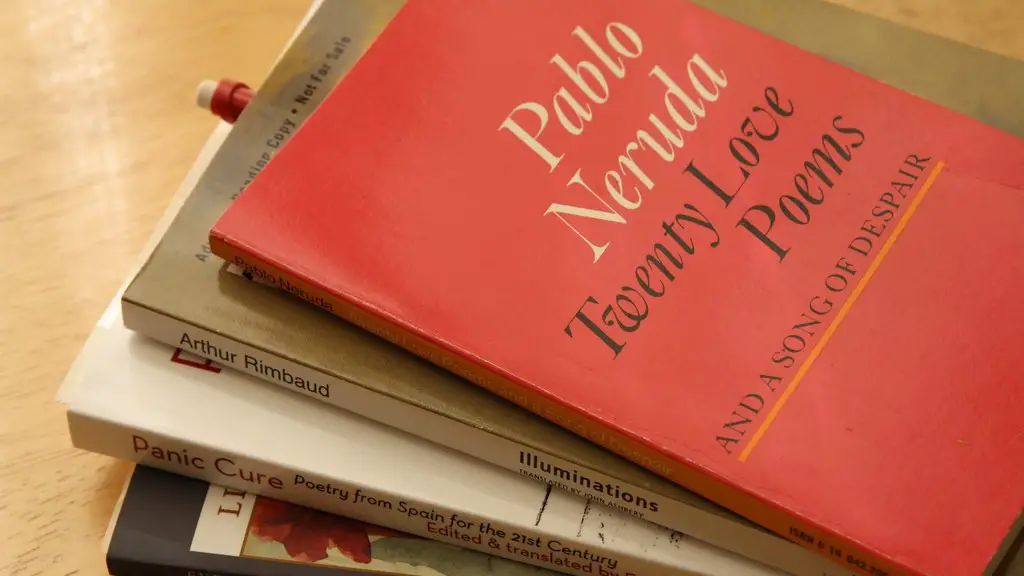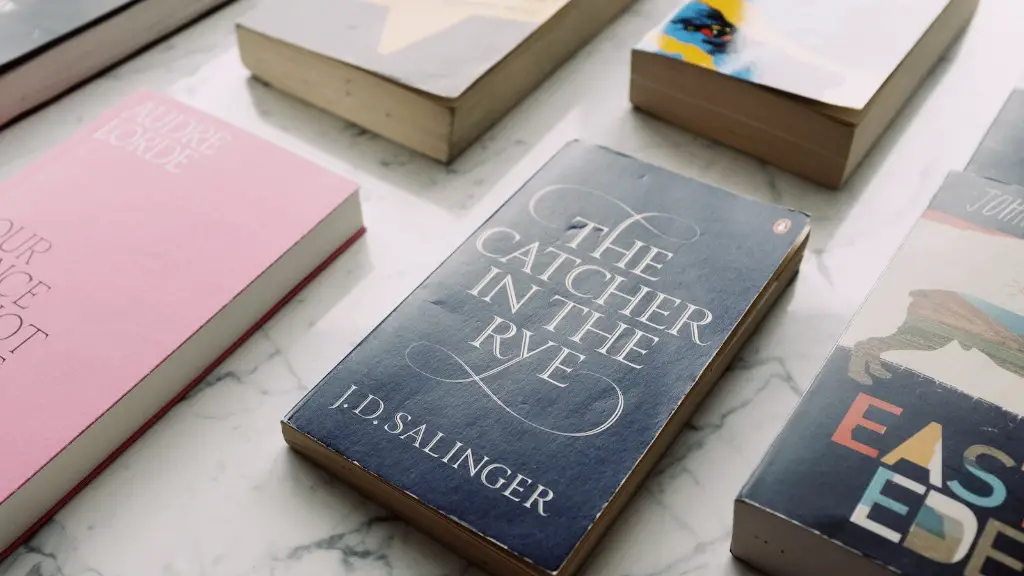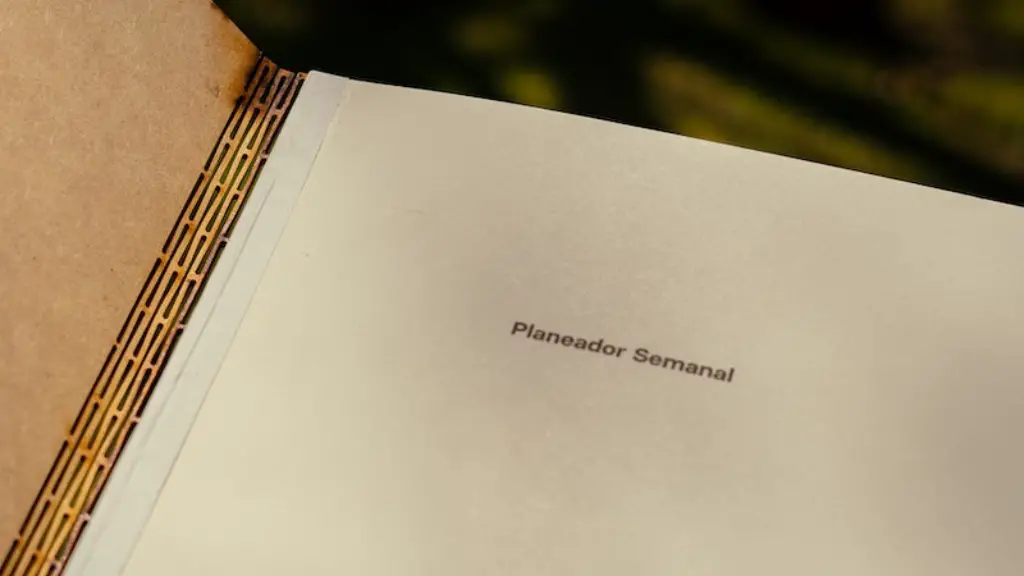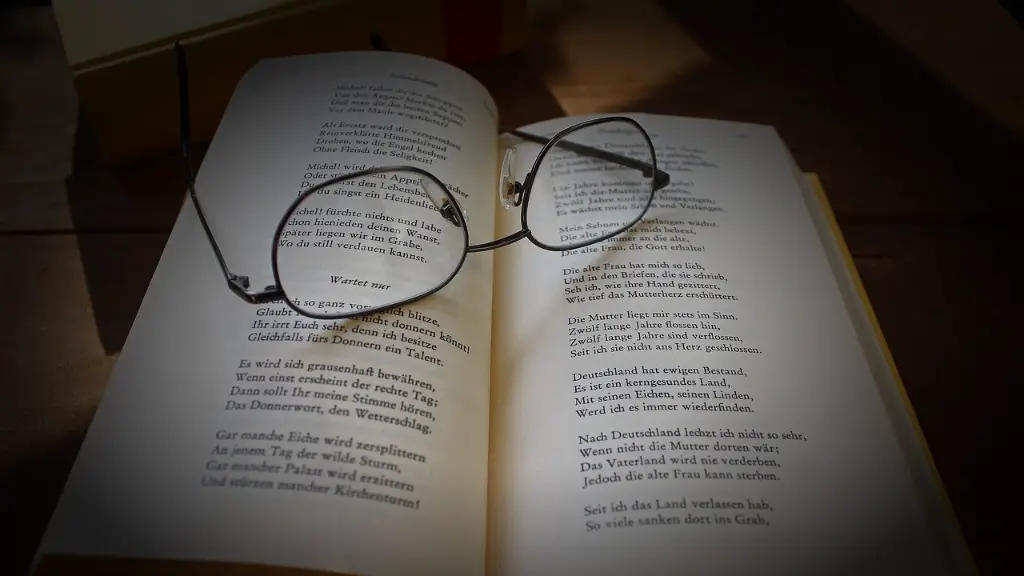The Literary Devices Used in Poetry
Poetry has the ability to capture the imagination and stimulate emotions like nothing else. It speaks to the heart and mind simultaneously, using a combination of text and form. But this power of words does not exist in a vacuum. Poetry uses a variety of tools to engage readers, most of which are known as literary devices. These devices often play a crucial role in making a poem powerful, helping to formulate emotion and create a vivid mental image.
One literary device commonly used in poetry is personification. Personification refers to the act of assigning human qualities to either an object or concept. For example, a poet might write, “The fire licked the sky,” to evoke a sense of hunger, conveying the idea that the fire is alive in some sense. Personification can be used to create a certain attitude and mood, as it often links to emotions.
Metaphor is another literary device used quite regularly in poetry. A metaphor is a comparison which doesn’t use the words “like” or “as”. For example, “You are my sunshine” is a metaphorical statement which implies that the person being spoken to is a source of joy and comfort. Metaphors can often be used to convey subtle contrasts or hidden meanings in poems.
Alliteration is another literary device used to emphasize certain words or phrases. Alliteration is the repetition of similar sounding words, often at the beginning of adjacent or close-knit words. For example, “Peter Piper picked a peck of pickled peppers,” or “She sells sea shells by the sea shore.” Alliteration can be used to create a certain feeling or mood.
Simile is another significant device used in poems. Simile involves the comparison of two different objects, usually using the words “like” or “as.” For example, “I am as strong as an ox” implies a great deal of physical strength. In this way, similes can help to draw more attention to certain points and bring certain ideas to life.
Onomatopoeia is a literary device which uses a recognizable sound to illustrate an image or feeling in poetry. Examples of onomatopoeia in poetry are “buzz” and “hiss”. This device is often used to describe the physical attributes of things, such as the sound of a passing wind. It can also be used to create a particular mood, such as fear or awe.
An example of repetition in a poem is anaphora. Anaphora is the repetition of words or phrases at the beginning of successive clauses or sentences. For example, “We shall fight on the beaches, we shall fight on the landing grounds, we shall fight in the fields and in the streets, we shall fight in the hills…” This device is often used to draw attention to certain words or phrases and to emphasize the importance of certain ideas.
Lastly, there is assonance, the repetition of vowel sounds in a group of words. This can be used to create a certain tone or rhythm. For example, “He sailed the seven seas”. Assonance is often used to create an atmosphere of calmness or serenity in poetry, and can also be used to emphasize certain words or phrases.
Personification and Narrative
Personification is another literary device used commonly in poetry to evoke a specific emotion or atmosphere. This technique is often employed to give a sense of life and motion to inert objects. For example, a poet may use figurative language to portray a winter storm as a raging monster or a young girl as a summer flower. Personification can also be used to create a narrative in a poem, allowing the poet to convey a story without necessarily writing a story.
Furthermore, personification can also be used to explore difficult emotions. For example, a poet might choose to personify loneliness as a distant stranger who is constantly lurking. In this way, personification can help to paint a vivid picture of complex feelings and experiences, allowing readers to explore these feelings at their own pace.
Personification can also be used to invoke a sense of empathy in readers. By giving human qualities to otherwise inanimate objects, the poet can elicit an emotional response from the reader. This can be used to raise awareness of certain issues, or simply to evoke a emotion from the heart of the reader.
Moreover, personification can also be used to add an air of mystery to a poem, by presenting humans-like qualities to objects which are seemingly beyond our understanding. By personifying such things, poets are able to tap into an entirely new level of emotion and insight, making their poem even more powerful.
Similes and Metaphors
Similes and metaphors are commonly used literary devices in poetry. A simile is a comparison between twoobjects, usually using the words “like” or “as”. For example, “She is as graceful as a swan”. Similes can be used to give a vivid description, to illustrate similarities between two objects or events, or to emphasize certain words or ideas.
Metaphors, on the other hand, are a figure of speech which does not use the words “like” or “as”. For example, “The wind ran through the forest”. Metaphors can be used to evoke a certain image or emotion, or to add a sense of mystery and ambiguity to a poem.
Similes and metaphors are often used together in poetry to create vivid images and to convey difficult ideas. They can be used to illustrate the commonality between seemingly conflicting concepts, or to explore themes of love, loss and identity. Furthermore, they can also be used to explore abstract ideas, such as fate or destiny.
Similes and metaphors can also be used to play on the idea of duality, by showing how two seemingly disparate elements can be similar when viewed from a certain perspective. For example, the phrase “life is like a river” can be used to explore the idea of constant change and flux. In this way, these devices can help to bring things to life in a poem, and add an element of depth and complexity to the work.
Alliteration and Onomatopoeia
Alliteration is a literary device which is used to emphasize and draw attention to certain words or phrases. Alliteration involves the repetition of sounds, often at the beginning of adjacent or close-knit words. For example, “The big bad wolf blew down the house”. Alliteration can be used to create a certain tone, or to evoke a particular atmosphere.
Onomatopoeia is a literary device which uses recognizable sounds to illustrate an image or feeling in poetry. For example, “The claps of thunder boomed”. This device can be used to paint a vivid mental image and create a certain mood.
Alliteration and onomatopoeia are commonly used together in poetry to create a more vivid and engaging experience. By combining the evocative sounds of alliteration with the physical images of onomatopoeia, the poet can create a sense of atmosphere and emotion, allowing readers to connect with the poem on a deeper level. These devices can also be used to emphasize certain words or ideas, making them stand out from the rest of the poem.
Anaphora and Repetition
Anaphora is a literary device which involves the repetition of words or phrases at the beginning of successive clauses or sentences. It is often used to draw attention to certain words or ideas and to emphasize their importance. For example, “We shall fight on the beaches, we shall fight on the landing grounds, we shall fight in the fields and in the streets, we shall fight in the hills…”
Repetition can also be used to give a poem a certain rhythm. By repeating certain words or phrases, poets can create a certain tone and mood, as well as emphasizing certain words or ideas. Repetition can also be used to create a certain context, as certain words or phrases can take on new meaning when repeated.
Furthermore, repetition can be used to create a sense of urgency or importance. By repeating the same words or phrases, the poet can convey a sense of importance or emphasis on certain words or ideas. This can be particularly effective in poems which are exploring difficult emotions like grief, pain and heartbreak.
Finally, repetition can also be used as an effective tool in storytelling. By repeating certain phrases or words, a poet can slowly build up a narrative and help bring the story to life. This can be particularly effective when exploring abstract ideas, such as fate, love and identity.
Assonance and Imager
Assonance is the repetition of vowel sounds in a group of words. It is often used to create a certain rhythm and atmosphere. For example, “He sailed the seven seas”. Assonance can be used to create a sense of calmness or serenity in poetry, and can also be used to emphasize certain words or phrases.
Imagery is another literary device which is commonly used in poetry. Imagery involves the use of vivid language to create mental images. For example, “The sun rose with fiery intensity”. This can be used to evoke a certain emotion or feeling, or to illustrate a certain idea or concept.
Assonance and imagery are often used together in poetry to create a vivid and engaging experience. By combining the rhythm of assonance with the vivid imagery of imagery, the poet can create a powerful and evocative experience, allowing readers to connect with the poem on a deeper level.
These devices can also be used to emphasize certain words or ideas, as well as creating an atmosphere of mystery and ambiguity. Furthermore, they can also be used to convey certain emotions or feelings, evoking an emotional response from the reader.





